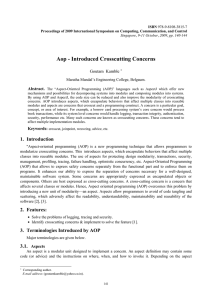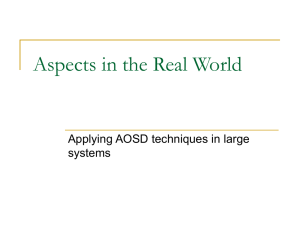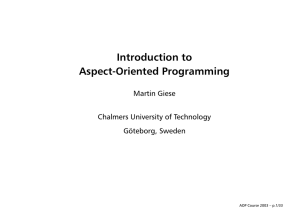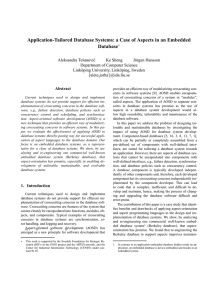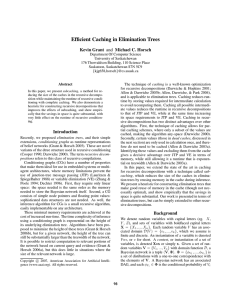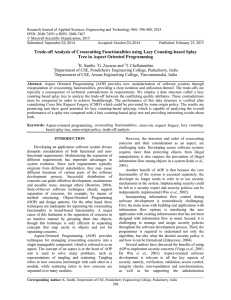Introduction to AOP Exercises for Wednesday, 2003/09/24
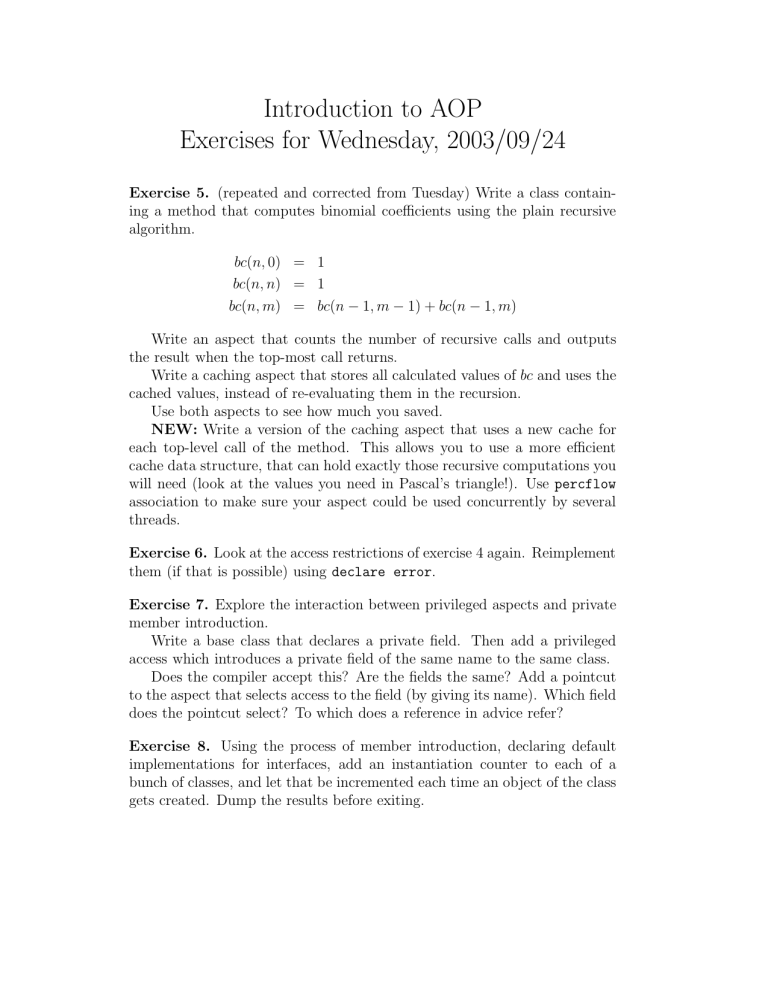
Introduction to AOP
Exercises for Wednesday, 2003/09/24
Exercise 5.
(repeated and corrected from Tuesday) Write a class containing a method that computes binomial coefficients using the plain recursive algorithm.
bc ( n, 0) = 1 bc ( n, n ) = 1 bc ( n, m ) = bc ( n
−
1 , m
−
1) + bc ( n
−
1 , m )
Write an aspect that counts the number of recursive calls and outputs the result when the top-most call returns.
Write a caching aspect that stores all calculated values of bc and uses the cached values, instead of re-evaluating them in the recursion.
Use both aspects to see how much you saved.
NEW: Write a version of the caching aspect that uses a new cache for each top-level call of the method. This allows you to use a more efficient cache data structure, that can hold exactly those recursive computations you will need (look at the values you need in Pascal’s triangle!). Use percflow association to make sure your aspect could be used concurrently by several threads.
Exercise 6.
Look at the access restrictions of exercise 4 again. Reimplement them (if that is possible) using declare error .
Exercise 7.
Explore the interaction between privileged aspects and private member introduction.
Write a base class that declares a private field. Then add a privileged access which introduces a private field of the same name to the same class.
Does the compiler accept this? Are the fields the same? Add a pointcut to the aspect that selects access to the field (by giving its name). Which field does the pointcut select? To which does a reference in advice refer?
Exercise 8.
Using the process of member introduction, declaring default implementations for interfaces, add an instantiation counter to each of a bunch of classes, and let that be incremented each time an object of the class gets created. Dump the results before exiting.





